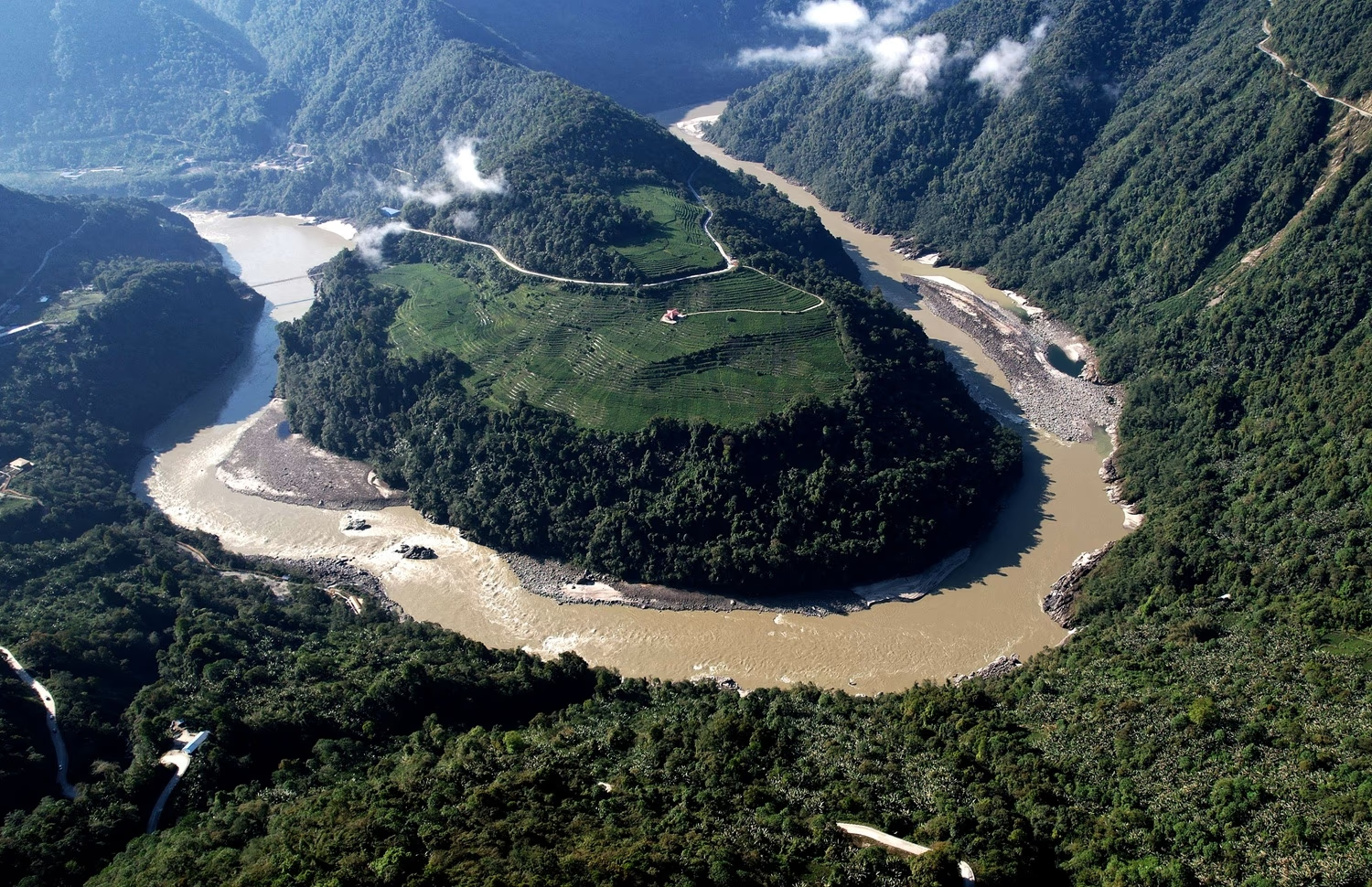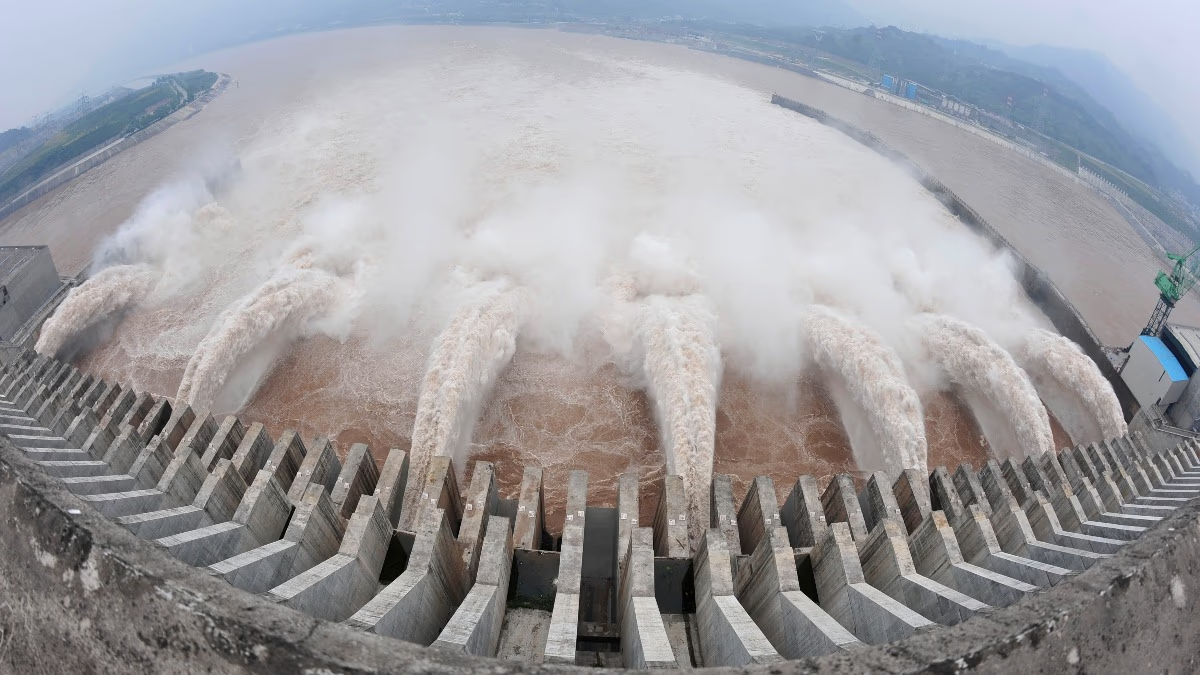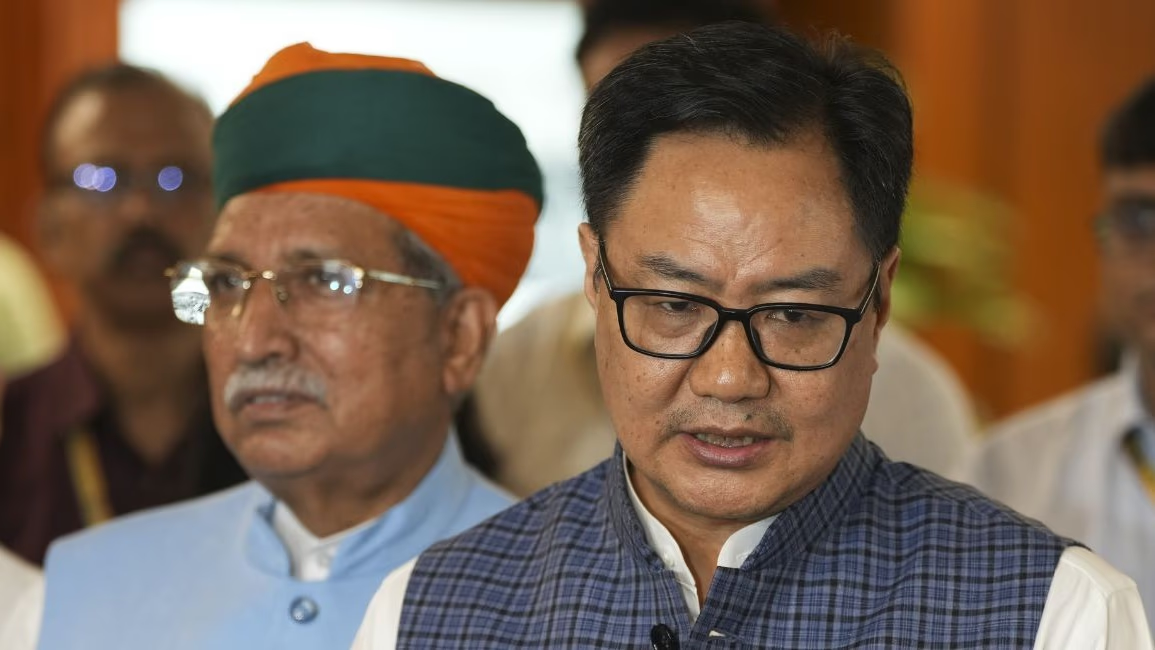The construction initiated by China over the Brahmaputra river in Tibet is set to become the largest man-made concrete structure on Earth. This is poised to be the world's largest hydroelectric dam with an investment of $167.8 billion, a figure surpassing trillions in rupees. Once operational, this power project will generate electricity for 300 million people in China and have a potential output of 300 billion kilowatt-hours (kWh).
China commenced work on this dam on July 19. The massive hydroelectric endeavor on the Yarlung Tsangpo river brings unprecedented engineering challenges.
This river carves one of the Earth's deepest gorges as it flows through the Tibetan Plateau, plummeting from a height of 25,154 feet. After crossing into India, it is known as the Brahmaputra.
Strategically positioned in a major Himalayan valley, this hydroelectric station is on the path the Brahmaputra takes before making its mesmerizing U-turn into Arunachal Pradesh, eventually streaming into Bangladesh.
According to South China Morning Post, to tap into the river's hydroelectric potential, four to six tunnels will divert half of the river's flow at a rate of around 2,000 cubic meters per second through the Namcha Barwa mountains. The river's sheer power is such that it could fill three Olympic swimming pools in merely a second.

Source: aajtak
Why China's Brahmaputra Dam is a Water Bomb for India
This ambitious construction by China rings alarm bells for India. Arunachal Pradesh's Chief Minister, Pema Khandu, recently highlighted the threat posed to India because China has not signed any international water treaty, releasing it from sharing flow data or adhering to regulations.
Control Over Water Flow:
By erecting a massive dam on the Yarlung Tsangpo, China could gain control over the Brahmaputra's flow, the lifeline for India's northeastern states. China could hold or release this water, increasing the risk of drought or flooding in Arunachal Pradesh, Assam, and potentially affecting Bangladesh.
Strategic Weapon:
During periods of conflict or tension, China might weaponize water. Control over these upper terrains poses a strategic threat to India, with water potentially being used against it should tensions escalate.
No formal water-sharing agreement exists between India and China, affecting India's capacity for security and disaster response.
Ecological Impact:
The dam could alter the entire river ecosystem. This could drastically impact the biodiversity of the Brahmaputra. China's reputation for secretive biological experiments further causes concern about potential ecological invasions, which could jeopardize the unique species like the one-horned rhinoceros in Assam. Intervention in the ecosystem could also impact agriculture in Arunachal and Assam.
Risk of Earthquakes:
Located in an earthquake-prone region of the Himalayas, the construction of this dam heightens disaster risks. Despite China's claims of extensive geological studies in this seismically active area, skepticism remains about the safety of the construction process.
India’s Strategy
The Brahmaputra enters India from China. While India cannot stop China from building this dam, it can strategize mitigation measures.
Dam-for-Dam Strategy:
India has encouraged the construction of large hydropower and multipurpose dams on rivers like the Siang in Arunachal Pradesh. These projects aim to control sudden water flows and manage excess water or floods resulting from China's releases. Planned projects like the 11,000-MW hydropower initiative on the Siang will act as a defense mechanism.
Diplomatic Engagement:
India has engaged in dialogue with China across various diplomatic platforms and expert-level committees. Since 2006, an institutionalized mechanism exists between the two nations to discuss trans-border river issues and sharing hydrological data. However, events such as the Doklam (2017) and Ladakh (2020) standoffs have prompted India to be cautious. Concerns have been raised with China through Union Minister Kirti Vardhan Singh.
India continues to demand transparency, prompt data sharing, and timely updates on construction plans from China.
Formal Water Sharing Treaty:
No formal water-sharing treaty exists involving the Brahmaputra between India and China. It is suggested that both nations work towards an agreement. Such partnerships could resolve complex water disputes and protect the interests of both countries.
Science-based Monitoring:
India has enhanced its scientific surveillance of trans-border water sources to forecast disasters by analyzing flow and volume data. Techniques include flood control and studying upstream activities. State-level studies by the Ministry of Water Resources assess carrying capacity and risk factors.




